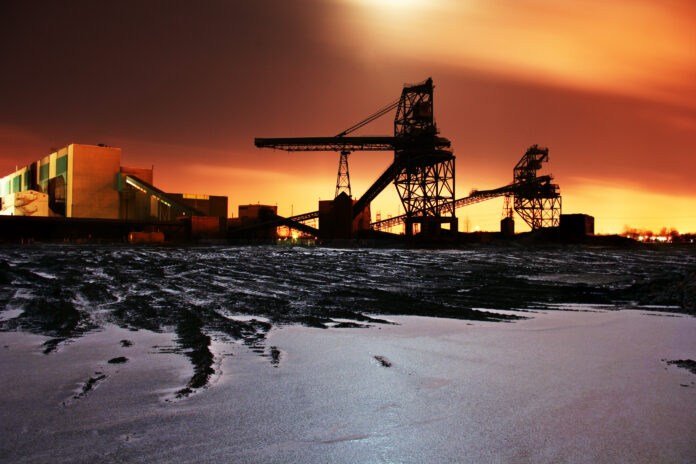Oxygen Prepares Earth for Advanced Life
Scientists may be unusual in this way but a time- and energy-intensive home addition offers a great chance to think about evolution and creation.
This past year I undertook a project to add some habitable space to my house. As I worked—being careful with the nails—I saw parallels between my planning and certain events that brought about Earth’s habitability. Specifically, do the significant influxes of oxygen in Earth’s history that are essential for large-bodied mammals reflect random events or purposeful design?
For the home project, the initial planning laid critical groundwork to ensure proper construction. I dug the footings and placed the sewer lines and support bolts before pouring the concrete foundation. Then I framed the walls and roof to make the interior water-tight. I am currently working on the plumbing and electrical before I can finish the interior and exterior walls. When done, my family will enjoy an extra bathroom, much-needed closet space and a new laundry room. Yet, the care and planning I invested in my small addition pales in comparison to Earth’s transformation from a formless, uninhabitable sphere to a diverse environment teeming with life.
The scientific and biblical descriptions of the early Earth both paint a desolate picture. There’s no structure or form like continents, and water covered the whole surface of the planet. It’s quite a contrast to today’s vast landmasses and oceans filled with an array of life. The account in Genesis 1 describes a purposeful, sequential transformation of the desolate early Earth until humanity ultimately arrives on the scene. A growing body of scientific evidence that identifies several of the crucial steps corroborates the biblical account.
One of those vital steps (the first of four) calls for the introduction of oxygen (called oxidation). Humans and all other large-bodied organisms require an abundance of oxygen in the atmosphere to live. Yet before three billion years ago, negligible free oxygen existed in the atmosphere. Roughly two-and-a-half billion years ago an oxidation event occurred. Photosynthetic organisms began producing sufficient oxygen such that it established a permanent presence in the atmosphere—although at only a few percent of present levels.
Not only did the oxygen concentration remain relatively constant for the next two billion years, but also single-celled life, rather than more-advanced multicellular life, dominated. Recently, a team of scientists identified one possible explanation for this long delay despite the initial rapid jump in atmospheric oxygen.1
Many of the more complex single-celled organisms and most of the multicellular organisms must transform the abundant nitrogen in the atmosphere into a more usable form—a process referred to as “nitrogen fixation.” In order to fix nitrogen efficiently, certain bacteria need sufficient quantities of the element molybdenum. Yet the researchers found that the oceans contained far less molybdenum compared to current values until roughly 600 million years ago when the first multicellular animals explosively appeared in the fossil record.
The main source of oceanic molybdenum originates from weathering of continental crust in the presence of abundant oxygen. Thus, it appears that during the two-billion-year period after the first oxidation event, both geological and biological processes were transforming Earth’s atmosphere and oceans from an oxygen-poor, molybdenum-poor condition to one with growing supplies of both elements.
Like pouring the concrete foundation before framing the walls, this transformation (a second step) prepared Earth for the rapid and widespread introduction of complex, multicellular animals during the Avalon and Cambrian explosions (approximately 570 and 540 million years ago). However, two critical steps remained.
Scientists have learned that the Doushantuo formation in the Yangtze Gorges area of South China contains abundant fossils that formed between 635 and 551 million years ago—the time period just prior to the Cambrian explosion. Analysis of carbon isotopes throughout the formation revealed that two additional oxidation events occurred during the period when the fossils were deposited.2
These events raised the oxygen content of the atmosphere above 60 percent of present levels and also fully oxygenated the oceans. In particular, the researchers noted that the first additional pulse of oxygen (or third step) resulted in a rise in microscopic organisms, while the second (fourth step) coincided with a dramatic increase in large, complex algae. In each case, the number of species present in the fossil formations doubled. Furthermore, in the 15 million years following the second pulse (geologically, a short time), complex macroscopic life-forms, dubbed Ediacaran organisms, increased dramatically worldwide.
As I work on my addition, there are certain steps that show dramatic changes in a short period of time. Other steps, while equally important, take much longer and exhibit little discernible change. Nevertheless, each step reflects purpose, care, and design as I seek to provide a better home for my family.
Similarly, the oxidation events and rapid appearance of new organisms and the much slower increase of the ocean’s molybdenum content show remarkable parallels to my project. While difficult to reconcile with evolutionary chance, they certainly seem consistent with the idea of a caring Designer who works through geological and biological processes to carefully prepare a suitable habitat for humanity.
Endnotes
- C. Scott et al., “Tracing the Stepwise Oxygenation of the Proterozoic Ocean,” Nature 452 (March 27, 2008): 456–59.
- Kathleen A. McFadden et al., “Pulsed Oxidation and Biological Evolution in the Ediacaran Doushantuo Formation,” Proceedings of the National Academy of Sciences, USA, 105 (March 4, 2008): 3197–202.






